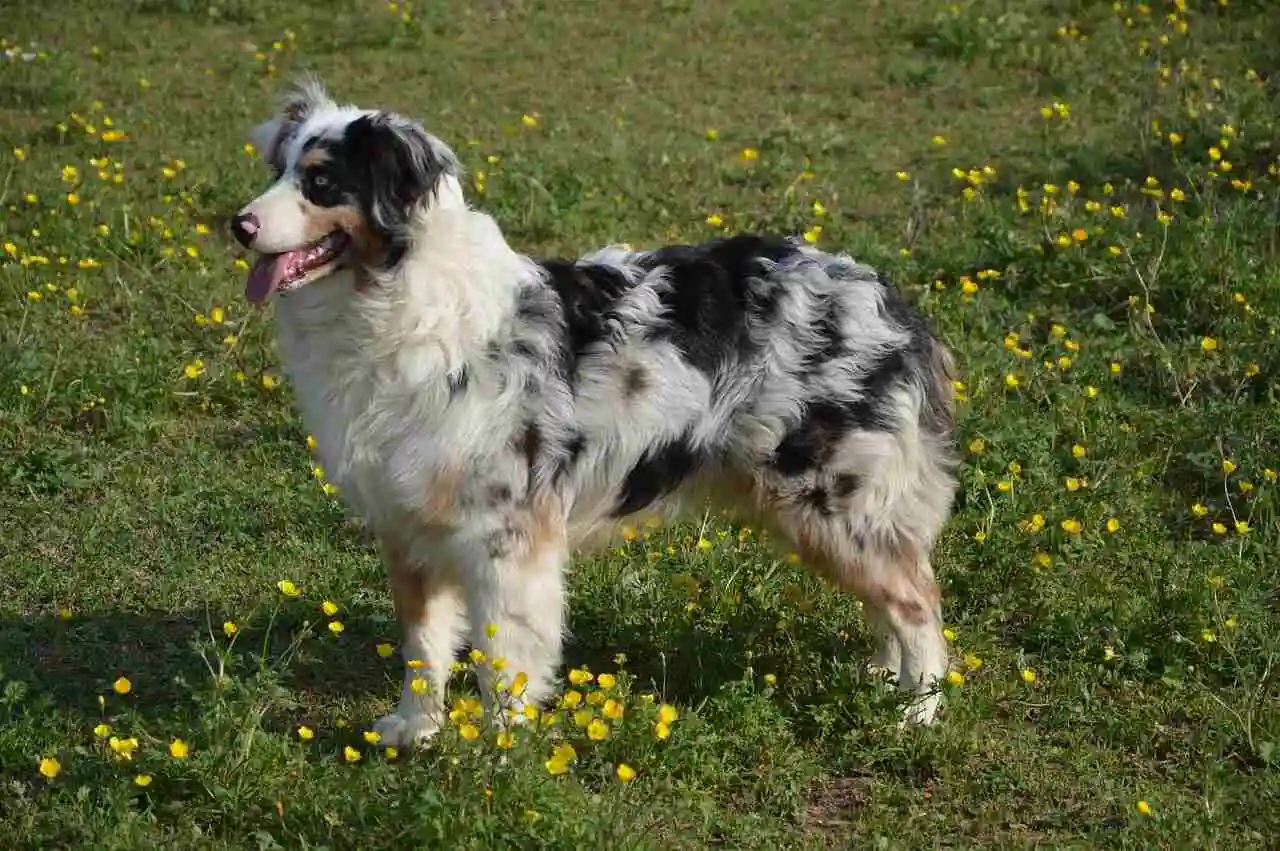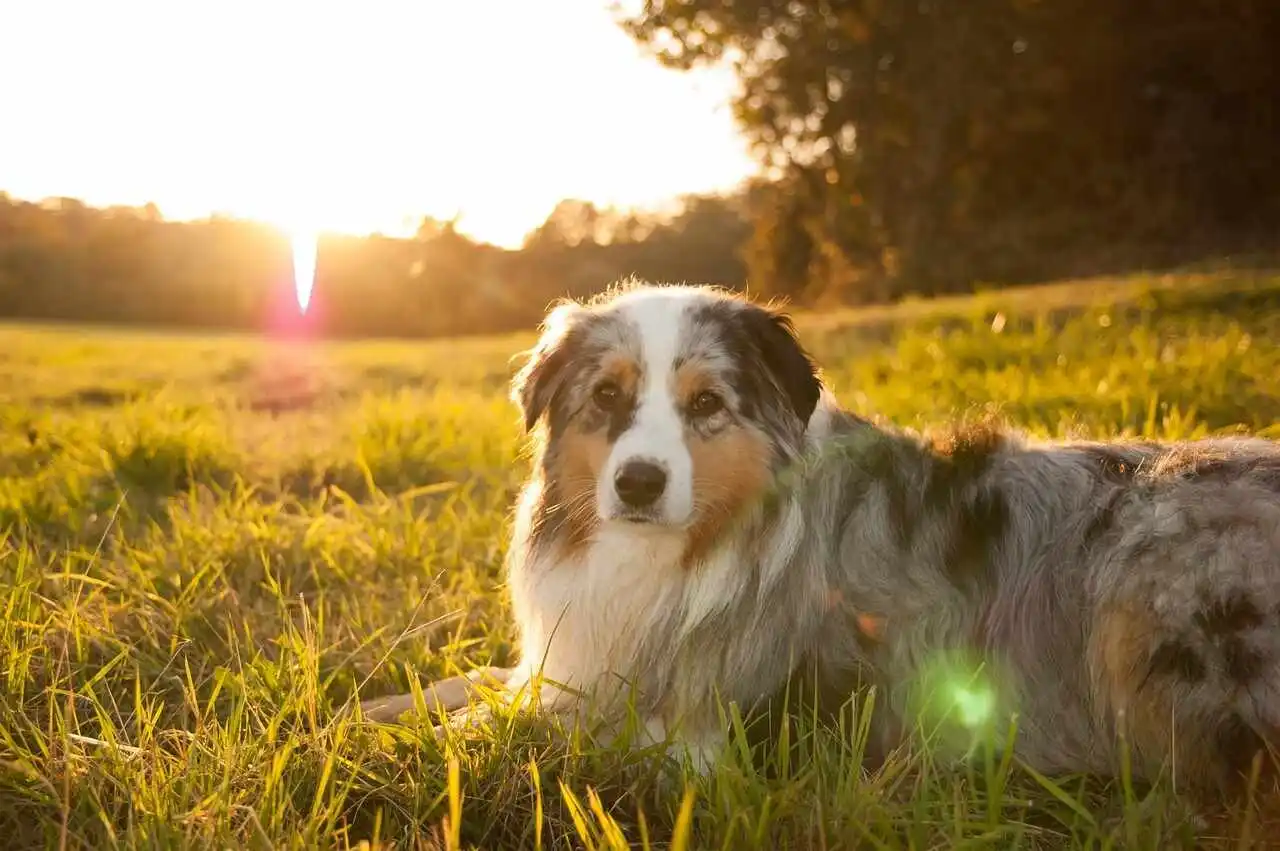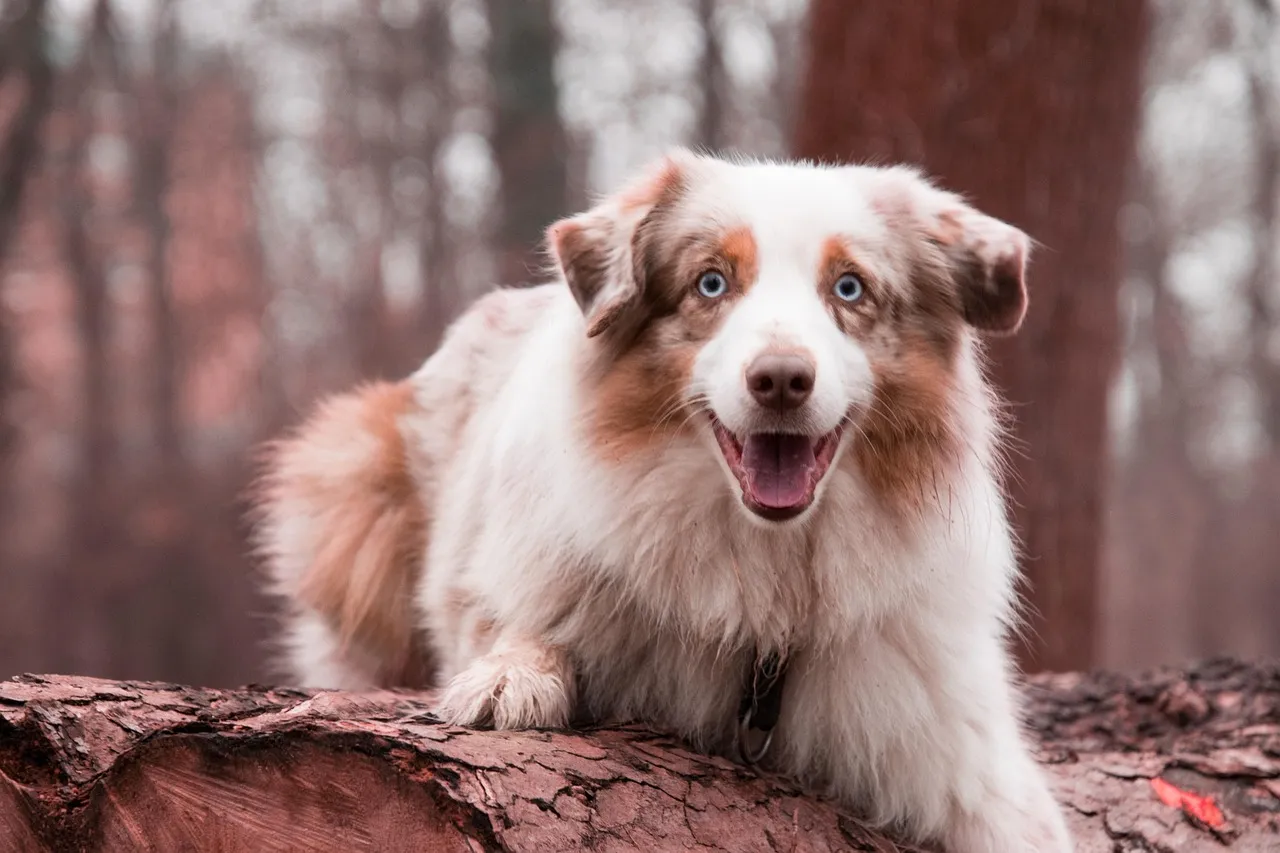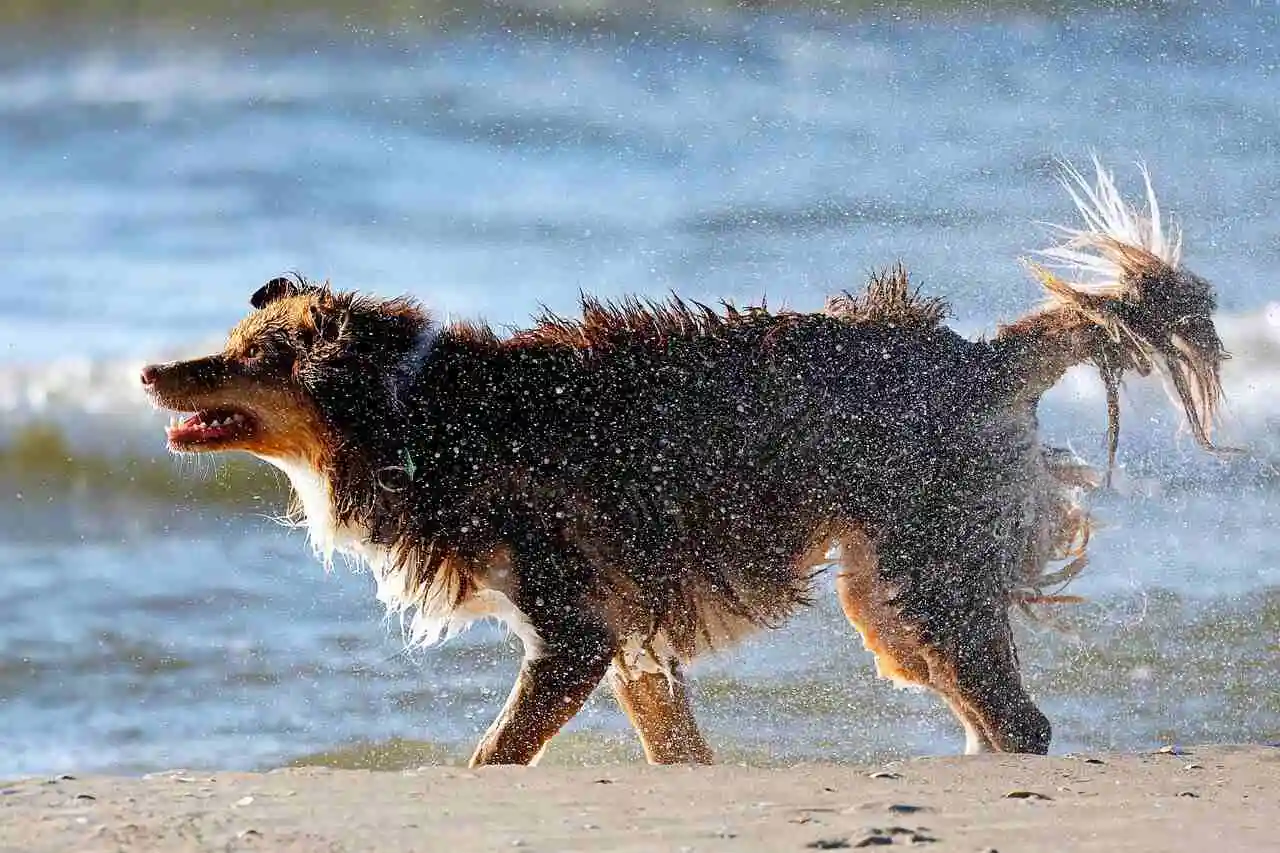The Australian Shepherd, one of the most admired herding breeds in the world, is notorious for its intelligence, energy, and stunning fleece colors. But another intriguing point that frequently captures people’s attention is the Australian Shepherd Tail or, occasionally, the lack of one. Some Aussies sport long, flowing tails, while others have short remnants or no visible tail at all. This leads to an important question: Why do some Australian Shepherds have tails and others don’t?
In this in-depth composition, we’ll explore everything you need to know about the Australian Shepherd Tail, including natural bobtails, tail docking, legitimacy, care tips, and whether the tail type matters in the end.
Are Australian Shepherds Born Without Tails?
Contrary to popular belief, not all Australian Goatherds are born without tails. Some are born with full-length tails, while others are naturally born with docked tails, a condition known as a natural bobtail. Natural bobtails are the result of an inheritable mutation passed down through specific parentage lines. These tykes aren’t docked; they’re simply born that way.
This inheritable particularity affects the T-box gene (specifically, a mutation in the C189G region), and when passed down from one parent, it can result in a bobtail. Still, it’s important to note that not all Australian goatherds carry this gene. Only about 20% of Aussies are born with natural bobtails, while the remaining majority are born with long tails.

What Is Tail Docking, and Why Is It Done?
Tail docking is a surgical procedure that involves cutting off a portion of a canine’s tail, generally within the first few days of birth. For Australian goatherds, docking is generally performed for literal, aesthetic, and functional reasons. In history, working Aussies had their tails docked to help with injuries during herding tasks in rough terrain. A long tail could get caught in walls, trampled by beasts, or injured in other ways while the canine was doing its job.
Away from practicality, tail docking became a standard practice in numerous countries, especially in the United States. Organizations similar to the American Kennel Club (AKC) prefer Aussies with tails “no longer than four elevations,” which means that breeders frequently dock tails to conform with these norms, especially for show-quality tykes.
Still, it’s important to distinguish between tail docking and natural bobtails. While natural bobtails are a result of genetics, docking is a mortal intervention.

Is Tail Docking Painful for Australian Shepherd Puppies?
While some argue that puppies feel minimal pain if docked within the first many days of life, ultramodern exploration suggests otherwise. According to the American Veterinary Medical Association (AVMA), tail docking can cause acute pain, indeed in invigorated puppies. Likewise, because the procedure severs muscles, joints, and bones, it can result in long-term complications similar to
> Neuromas (Painful whim-wham growths)
> Phantom Tail Pain
> Acuity
> Behavioral Changes
Breeds also use their tails to communicate with both humans and other tykes. Docking removes an essential tool for expressing feelings such as happiness, fear, or agitation. This can hamper social development and lead to misconstructions during relations with other tykes.

Legal Status of Tail Docking Around the World
The legitimacy of tail docking varies significantly by country and indeed by region. In the United States, tail docking is legal and extensively practiced, particularly for working types and show types. Numerous U.S.-grounded breeders still dock Aussie tails to cleave to AKC norms.
Still, in countries similar to the United Kingdom, Australia, and numerous corridors of Europe, tail docking is banned or rigorously regulated. It’s allowed only for medical reasons or if the canine is certified as a working dog, similar to a gun dog. These regulations were introduced to promote animal welfare and reduce gratuitous surgical procedures done purely for ornamental reasons.
As public mindfulness about bestiality grows, more breeders and possessors are choosing to leave tails complete, even in countries where docking is still legal.

The Genetics Behind Natural Bobtails in Australian Shepherds
A natural bobtail is caused by a dominant gene mutation, meaning that only one copy of the gene from a parent is required for a puppy dog to be born with a docked tail. Still, if both parents pass on the bobtail gene, the result can be fatal to the embryo, leading to birth defects or severe experimental issues. This is why ethical breeders precisely plan their pairings and frequently perform inheritable testing to avoid pairing two natural bobtail carriers.
The length of a natural bobtail can vary greatly from a bitsy gob to a many-elevation long, but these tails are completely formed and don’t involve surgical junking.

Pros and Cons of Australian Shepherd Tail Types
When deciding whether a docked or natural tail is better, it’s essential to consider the pros and cons of each.
Docked Tail Pros:
> Reduces the chances of tail injury in working surroundings.
> Easier to maintain in terms of fixing and hygiene.
> Conforms to traditional AKC show norms.
Docked Tail Cons:
> Pain and implicit complications from the procedure.
> Loss of natural expression and communication.
> It may be seen as unethical or indeed illegal in numerous countries.
Natural Tail Pros:
> No threat of surgical pain or side effects.
> Tails help with balance, collaboration, and emotional expression.
> More natural and widely accepted in progressive countries.
Natural Tail Cons:
> Slightly more prone to injury in working types.
> May be disqualified from certain competitions in the U.S.
Do Tails Affect an Australian Shepherd’s Personality?
The presence or absence of a tail has no direct impact on an Aussie’s personality. These tykes are known for being energetic, smart, and pious, regardless of tail length. Still, because the tail is a crucial part of non-verbal communication, Aussies with full tails may be better at expressing their feelings to other tykes and humans.
In breeds with docked or bobtails, possessors need to learn their canines’ other cues, such as observance position, eye contact, and body posture, to understand what they’re feeling.

How to Watch for an Australian Shepherd Tail?
Proper tail care depends on the type of tail your Aussie has. For long, natural tails, regular grooming is a must-have. The thick fur can easily tangle or collect debris during outdoor conditioning. Use a slicker brush or fixing rake several times a week to keep the fur clean and mat-free.
For Aussies with bobtails or docked tails, the fixing requirements are minimal. Still, it’s important to check the area regularly for signs of infection, irritation, or swelling, especially in young tykes or those with recent docking injuries.
Should You Choose a Docked or Natural Tail Australian Shepherd?
Still, you may wonder which tail type is better if you are planning to buy or borrow an Australian Cowgirl. If you are looking for a show canine in the U.S, a docked tail might be necessary to conform to strain norms. Still, for most pet possessors or those living in countries with bestiality laws, a natural tail is the ethical and health-conscious choice.
The most important factor is choosing an estimable breeder or deliverance association that prioritizes the health and well-being of the canine regardless of tail type.
Final Thoughts:
Does It Matter If an Aussie Has a Tail?
At the end of the day, an Australian Shepherd Tail does not define the canine’s worth or capabilities. Whether your Aussie has a long, flowing tail, a cute little bobtail, or a docked tail, their fidelity, intelligence, and energy are what make them exceptional.
As the trend toward natural types grows and mindfulness about bestiality increases, more people are choosing to keep their Aussies just as nature intended, with their tails complete. Understanding the history, genetics, and counteraccusations of tail types can help you make the most stylish and ethical decision for your future furry friend.
Frequently Asked Questions
1. Why are Australian goatherds born without tails?
Some Australian goatherds are born with a natural bobtail due to an inherited mutation in the T-box gene. This is a natural particularity and not the result of docking.
2. Do Australian goatherds have naturally short tails?
Yes, about 20% of Australian Goatherds are born with naturally short tails (bobtails), while the rest are born with full-length tails.
3. Why do people dock Australian Shepherd tail?
Tail docking in Australian goatherds is frequently done for literal working purposes, injury prevention, and to meet strain norms, especially in the U.S.
4. Is tail docking painful for Australian Shepherd puppies?
Yes, tail docking can be painful and may beget long-term complications similar to habitual pain or loss of tail communication.
5. Is tail docking legal for Australian goatherds?
In the U.S., tail docking is legal. Still, it’s banned or heavily regulated in countries like the UK, Australia, and numerous countries in Europe unless medically necessary.
6. Can Australian Shepherd Tail be shown with full tails?
In the U.S., the AKC prefers docked tails for show tykes. Still, Aussies with full tails can be shown in countries where docking is banned.
7. How do I know if my Aussie has a natural bobtail or a docked tail?
Natural bobtails are genetically inherited and vary in length. A warhorse or inheritable test can confirm if your canine has a natural bobtail or was docked.
8. Does a tail affect an Australian Shepherd’s gesture?
No, the tail doesn’t directly affect the gesture.
But tykes with full tails communicate feelings more easily through tail movement.
9. How should I watch for my Australian Shepherd’s tail?
Encounter long tails regularly to help with matting and check for injuries. For bobtails or docked tails, check for signs of vexation or infection.
10. Should I choose a docked or natural-tail Australian Cowgirl?
It depends on particular preference, strain norms, and country laws. Natural tails are healthier and more ethical in countries where docking is discouraged or banned.











